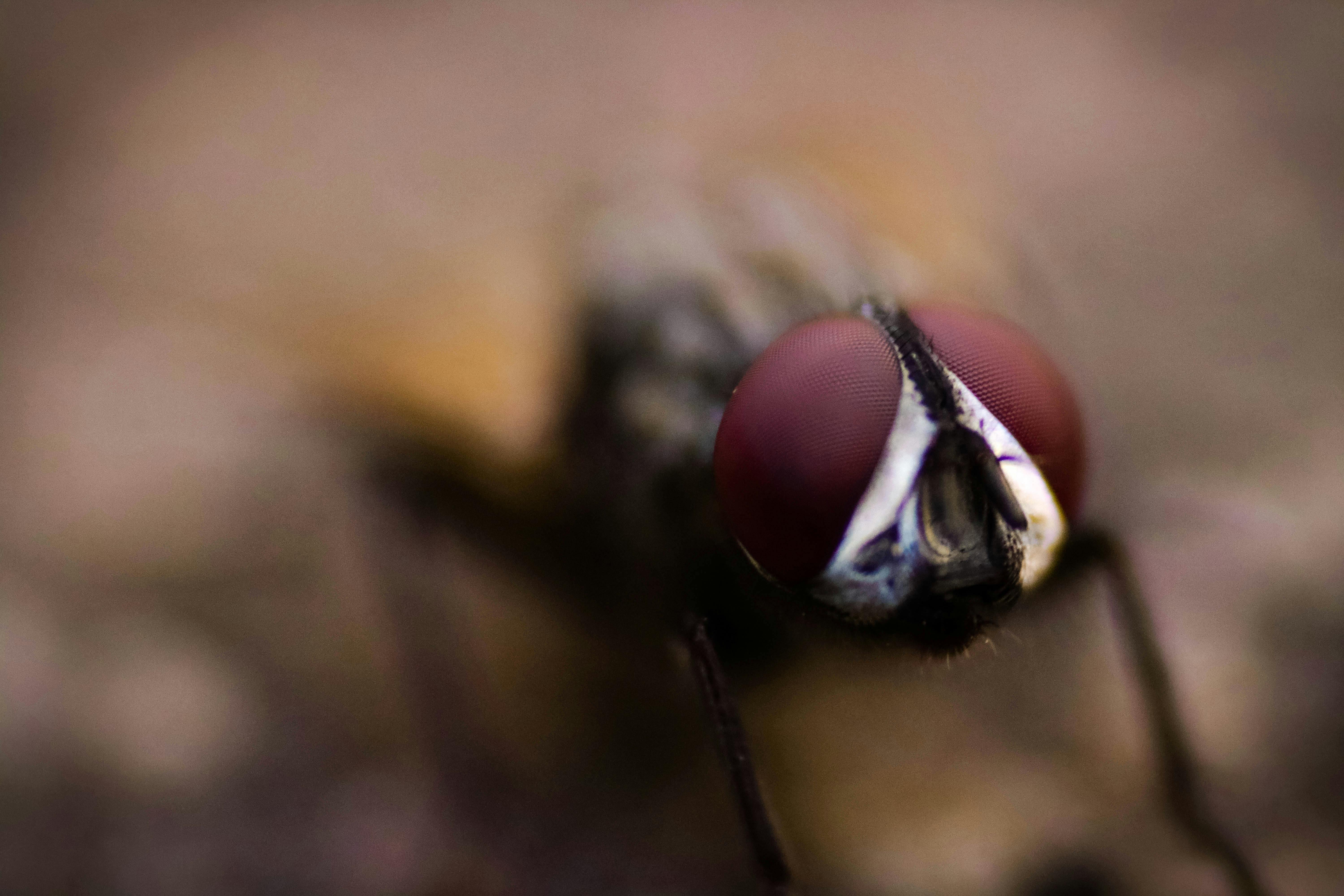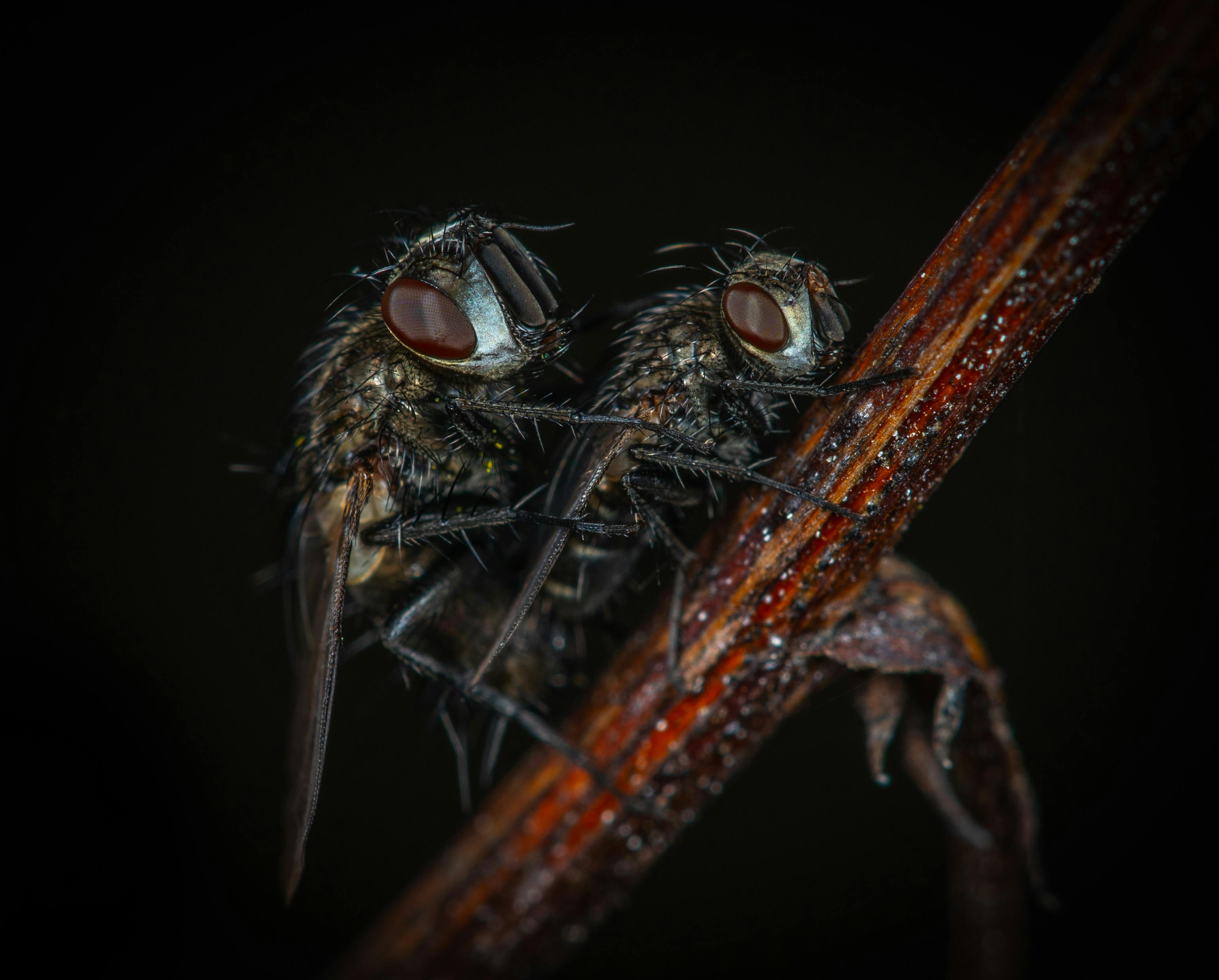Are drain flies and fruit flies the same? This is a common question that many people have, as these two types of flies can be very similar in appearance. Drain flies, also known as filter flies or sewage gnats, are typically found living near water sources or areas where there is decomposing organic material. They have distinctive furry-looking wings and tend to rest on walls or ceilings. Fruit flies, on the other hand, are more commonly found in kitchens and areas where there is ripened or fermenting fruit. They usually have unmarked wings and are smaller than drain flies. While they may appear to be similar, there are some key differences between these two species of fly.No, Drain Flies and Fruit Flies are not the same species. Drain Flies belong to the family Psychodidae, while Fruit Flies belong to the family Drosophilidae. They are both small flies, but they have different physical characteristics and typically inhabit different environments.
Drain Flies
Drain flies are small flying insects that breed and live in drains. They are also known as moth flies or sewer gnats. Drain flies usually live in moist areas and can breed in organic matter that accumulates in drains and pipes. These insects are typically about 1/8 inch long with a grayish color and dark patches on their wings. They have long hairs on their bodies, legs, and wings which help them to stay afloat while flying. Drain flies can be a nuisance as they can swarm around sinks, bathtubs, and other moist areas within the home. They can also carry pathogens on their bodies which could cause health problems if ingested.
Fruit Flies
Fruit flies are small winged insects that feed on fruit and vegetables. They are also known as vinegar flies or wine-tasting flies due to their preference for fermented liquids such as wine, beer, vinegar, etc.. Fruit flies are typically about 1/8 inch long with a red or black coloration. They have compound eyes and short antennae which they use to detect the presence of food sources. Fruit flies lay their eggs on the surface of fruits or vegetables which hatch into larvae within 24 hours. These larvae feed on the fruit or vegetable until they reach adulthood at which point they will fly away in search of more food sources. Fruit flies can be a nuisance as they swarm around fruits and vegetables and contaminate them with their eggs or larvae.
Identification of Drain Flies and Fruit Flies
Identifying drain flies and fruit flies is important in order to properly manage the population. Both types of flies are similar in size and color, but there are differences in their behavior and characteristics that can help you identify them.
Drain flies, also known as moth flies or sewer gnats, have a long, grayish-black body with furry wings. They typically measure 2-3 mm in length and have a distinctive fuzzy appearance due to their wing hairs. They feed on organic material found in drains or moist areas such as bathrooms and kitchens, and are often attracted to bright lights.
Fruit flies are smaller than drain flies, measuring only 1-2 mm in length. They have a tan body and red eyes, making them easy to differentiate from other types of houseflies. Fruit flies feed on decaying fruit or vegetables, often reproducing quickly when food sources are plentiful. They are attracted to light and tend to fly erratically around light fixtures or windows.
Both drain flies and fruit flies can become a nuisance if left unmanaged, but with proper identification it is possible to take the necessary steps to eliminate them from your home. If you suspect that your home may be infested by either type of fly, contact a professional pest control service for assistance in identifying the species present and for advice on how best to deal with them.
Appearance
Drain flies and fruit flies differ in appearance, despite their similar names. Drain flies, also known as moth flies, have short, fuzzy bodies and wings with a mottled pattern. They usually appear grayish-black in color and have antennae that are feathery or plume-like. Fruit flies, on the other hand, are smaller than drain flies and have bright red eyes. Their wings are translucent and their bodies are usually tan or yellowish in color. Additionally, fruit fly antennae are thin and thread-like.
Both types of flies have two wings that they use for flying. However, drain flies tend to be slower fliers than fruit flies due to their larger size. In addition to their differences in appearance, drain flies tend to prefer damp or wet areas while fruit flies favor rotting fruits and vegetables.
Drain Flies and Fruit Flies
Drain flies and fruit flies are two of the most common types of flies found in homes and businesses. Both species are considered nuisance pests, although neither carries any disease-causing pathogens. Drain flies feed on organic matter such as decaying food, while fruit flies prefer sweet, fermenting fruits and vegetables. Understanding where these pests live and breed can help you control them more effectively.
Where Do Drain Flies Live?
Drain flies are commonly found near drains, sewers, septic tanks, and other moist areas. They breed in standing water or moist organic matter that accumulates in these areas. They often lay their eggs near the edges of drains or in cracks in grout or cement around the drain. The larvae feed on organic matter such as food particles or decaying material that collects near or inside the drains.
Where Do Fruit Flies Live?
Fruit flies prefer to live in warm, damp areas where food is readily available. They are most commonly found near fruits and vegetables that are over-ripe or rotting, as well as fermenting liquids like beer, wine, or cider. Fruit fly larvae feed on the fermenting material while adult fruit flies feed on both fermenting material and fresh fruits and vegetables. Fruit fly larvae can also be found living among the roots of houseplants growing in soil that is kept too wet for too long.

Drain Flies and Fruit Flies
Drain flies and fruit flies can be a nuisance to humans, but they are not typically harmful. Drain flies, also known as moth flies, are small insects that live near sources of water. They can be found in bathrooms, kitchens, and laundry rooms. Fruit flies are attracted to ripe fruit and fermenting liquids such as beer or wine. Both types of flies may enter homes through open windows or doors and breed in areas with moisture.
Identifying Drain Flies and Fruit Flies
Drain flies have short bodies covered with long hairs and a wingspan of up to 8 mm. Their color ranges from tan to grayish-black. Fruit flies are about 3 mm long with yellowish-brown bodies and red eyes. They have distinctive black stripes on their wings and abdomens.
Health Risks Associated With Drain Flies and Fruit Flies
Although neither drain flies nor fruit flies pose any serious health risks to humans, they can spread bacteria from one location to another. They can also contaminate food if they come into contact with it. As such, it is important to keep areas where food is stored or prepared clean and free of any standing water or dampness that could attract these pests. It is also important to keep windows and doors closed when possible to prevent these insects from entering the home.
What Attracts Drain Flies and Fruit Flies to Your Home?
Drain flies and fruit flies are two common household pests that can be attracted to a variety of different sources. These small, flying insects feed on organic matter, and they are attracted to the moist, dark environments found in drains, garbage disposals, and other areas where food particles collect. Fruit flies are also drawn to ripened fruits and vegetables that may be left out in the open or stored improperly. Both drain flies and fruit flies can become a nuisance if left untreated.
Moisture is one of the primary attractants for both drain flies and fruit flies. Standing water or damp surfaces can attract these pests, so it is important to keep plumbing fixtures such as bathtubs, showers, sinks, toilets, and drain traps clean and free of mold or mildew. Clogged drains or leaky pipes can also provide an ideal breeding ground for these insects.
Food sources are another major draw for these types of pests. Decaying organic matter such as fruits, vegetables, meat scraps, pet food dishes, garbage cans, and other areas where food particles accumulate provide an ideal environment for fruit flies to breed in. Drain fly larvae feed on organic debris found in sewers or gray water systems such as sewage treatment plants or septic tanks. It is important to properly store all food items and dispose of any uneaten scraps promptly to reduce the chances of an infestation.
Finally, fruit flies can be attracted to lights at night due to their phototactic behavior. Placing screens over windows or installing yellow bug lights that produce less attractive ultraviolet light can help deter these pests from entering your home. Taking steps to eliminate excess moisture and reducing potential food sources will also help keep drain flies and fruit flies away from your property.
Prevention of Drain Flies and Fruit Flies in Your Home
Drain flies and fruit flies can be a nuisance in your home, but there are steps you can take to prevent them from taking up residence. One of the most important things you can do is keep your home clean and free of food debris. Make sure to keep garbage cans tightly sealed, and dispose of food scraps regularly. Wipe down kitchen counters, stovetops, and other surfaces that may have food residue on them. Vacuum regularly to remove any crumbs or other debris that may attract these pests.
It’s also important to inspect your plumbing system for any leaks or other issues that may be causing standing water. Drain flies breed in standing water, so it’s essential to make sure your plumbing is functioning properly. If you find a leak or an issue with your plumbing, call a professional right away for repairs.
Fruit flies are attracted to sweet smells, so it’s important to cover any open containers of juice or other sweet liquids that may attract them. If you’re keeping fruits out on the countertop, make sure they are sealed properly in airtight containers or bags. It’s also recommended to store ripe fruits in the refrigerator instead of leaving them out at room temperature.
If you do notice drain flies or fruit flies in your home, contact a pest control company right away for treatment options. They will be able to identify the source of the infestation and recommend a plan for getting rid of them quickly and effectively. Taking preventative measures is key when it comes to avoiding an infestation in the first place!

Conclusion
Fruit flies and drain flies are both members of the family Drosophilidae, however, they are not the same species. Drain flies live in damp areas, such as sewage systems and drains, while fruit flies prefer to live near sources of fermenting fruits and vegetables. Though they look similar due to their small size, drain flies have a unique pattern on their wings that sets them apart from other species. Furthermore, drain fly larvae feed on decaying organic matter, while fruit fly larvae feed on fermenting fruits and vegetables. Therefore, distinguishing between the two is essential for effective pest control.
In conclusion, while fruit flies and drain flies may appear similar in size and shape, they actually represent two distinct species with different habitats and dietary preferences. For this reason, it is important for homeowners to correctly identify which type of fly is present in order to determine the most effective form of pest control.



